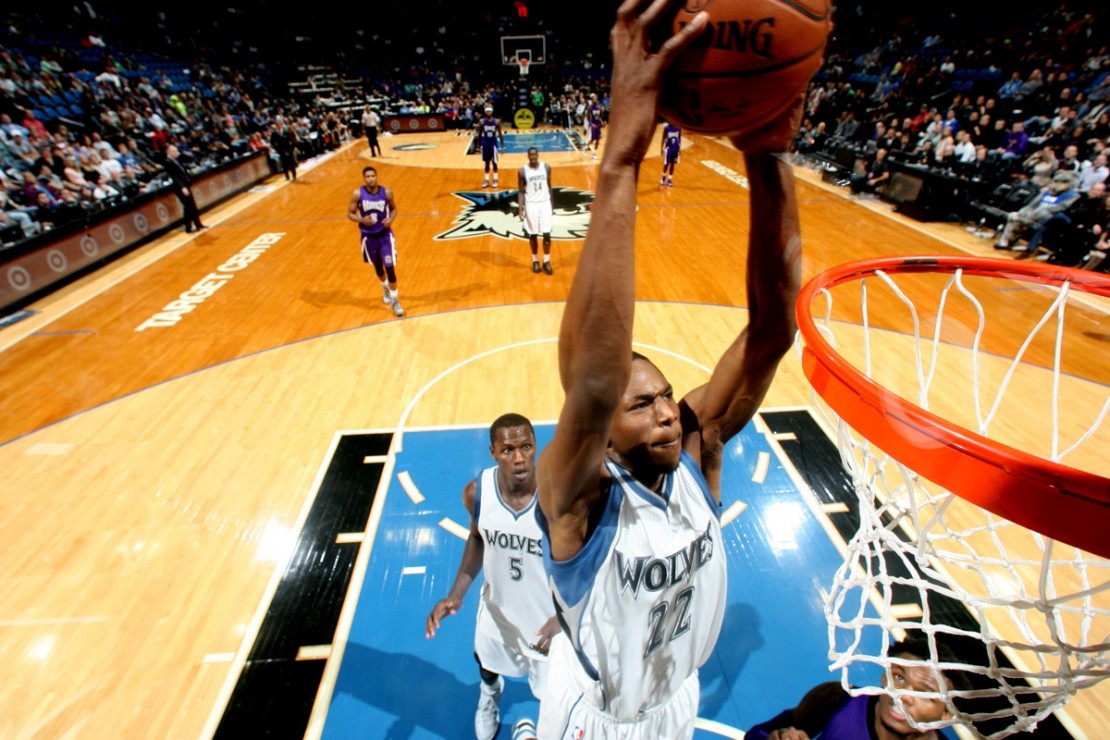Andrew Wiggins burst onto the NBA radar while still in high school. Christened “Maple Jordan” and “The Next LeBron,” and proclaimed to be the undisputed number-one pick two years before he was even eligible for the NBA draft, Wiggins seemed destined to not only put Canada back on the basketball map, but to be the salvation of the franchise lucky enough to draft him.
However, after a tepid showing in his one season at the University of Kansas, Wiggins’ stock as a prospect was considerably tarnished. He lacked the ball-handling skills, aggressiveness, and assertive personality to overcome the more rigid college-style game. Consequently, he came to be seen by some pundits as the latest in a line of overhyped kids who would never reach their potential.
As the draft rolled around, the presumed first overall selection—Wiggins’ Kansas teammate Joel Embiid—broke his foot and opened the door for Wiggins to reclaim his status as premier prospect in the 2014 NBA draft. Even more fortuitously, the Cleveland Cavaliers (home to the two highest drafted Canadians ever—Tristan Thompson and Anthony Bennett) won the draft lottery.
However, before the nascent Cleveland Canadians could ever set foot on the court together, LeBron James sent shockwaves through the NBA world with his announcement in Sports Illustrated that he was signing with Cleveland as a free agent.
The article mentioned how excited James was to be playing with specific individuals on the Cavaliers, naming Kyrie Irving, Anderson Varejao, Tristan Thompson, and even Dion Waiters as key building blocks. Wiggins’ name was nowhere to be found in the article.
With reports of Kevin Love’s increasing discontent in Minnesota and LeBron angling publicly for Cleveland to make win-now trades, the writing was on the wall for Wiggins’ departure. He was traded along with Anthony Bennett and a first-round pick (ironically, the pick that Miami originally sent Cleveland for LeBron James’ in the 2010 sign-and-trade) to Minnesota for Kevin Love on Aug. 22, mere weeks before the start of training camp.
His NBA career in Minnesota began much like his one season at Kansas. He showed glimpses of stardom with highlight reel dunks, blocks, and elite-level defense but was largely content to stick to the margins during games.
Wiggins’ November averages of 12.3 points, 3.8 rebounds, and 1.0 assists were nothing to get too excited about (especially with his subpar shooting percentages). However, something clicked with Wiggins in his first game against the team that drafted and then promptly shipped him out the door. Since the Dec. 23 loss to the Cavaliers in which he scored 27 points, Wiggins has averaged 21 points, five rebounds, and three assists per game, 50 per cent shooting from the field and 40 per cent from the three-point range, while guarding the best opposing wing player every night. Simply put, he’s playing at an all-star level. As a 19-year old. Despite his limited ball-handling ability, Wiggins punishes players in the low post, scores off powerful cuts, and is already in the conversation for best rookie shooters in recent memory, especially among elite athletes.
Injuries to Ricky Rubio, Nikola Pekovic, and Kevin Martin, collectively out since November, undoubtedly helped Wiggins to step into the spotlight, but his progress is remarkable nonetheless. His numbers have increased across the board each month and he seems to grow more confident by the day. Even more amazing is the fact that he is still extremely raw as a prospect and is only just starting to tap into his near limitless potential.
With Jabari Parker sidelined for the season with a torn ACL and European import Nikola Mirotic playing limited minutes on a stacked Bulls team, the Rookie of the Year Award is Wiggins’ to lose. Timberwolves fans and Canadians alike can salivate about it being merely the first piece of hardware that the young Canadian will collect over his career.
Here’s Wiggins’ scouting video from the 2014 NBA Draft









